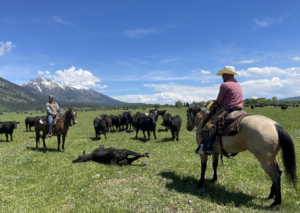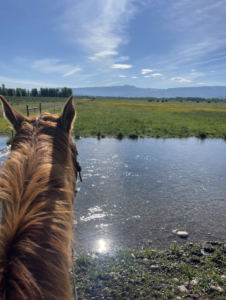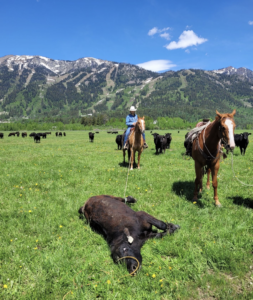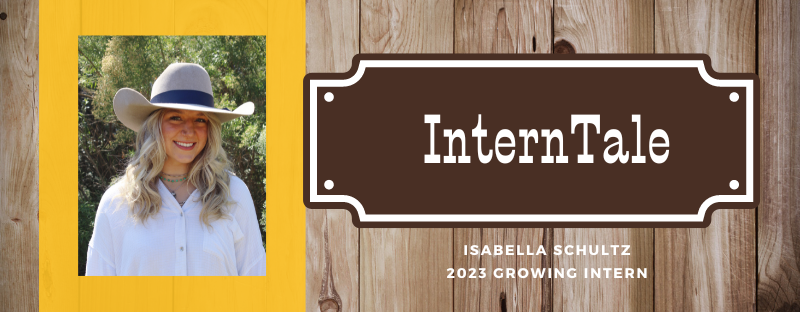Heading and Heeling
#bfrdpwy #aginternship #RightRisk

This week I really focused on my roping skills. I’ve learned quite a few tips and principles that allow riders to safely and efficiently get an animal on the ground. I would say the first consideration should be your horsemanship. You have to give your horse enough reign to track the cow, but not so much that you can’t make quick adjustments to your path. You need to stay balanced in the saddle so you can adapt to the irregular path the animal could take. Once you get close enough to the animal, you should swing your rope in a rhythm that is natural and mindless so you can focus on watching the patterns of the animal’s feet or head.
If you’re heading the animal, you want to reach and throw the rope out in front of it’s nose. Once you catch the head, you need to keep your horse going at a steady pace with the animal until you can get a good dally and slow the animal down. Heeling is usually slower paced than heading, but the same principles apply. A heel shot should be thrown as a sort of collapsed loop wrapped in front of the animal’s back feet, forming a trap that they will step into. Once one, or both feet, are in your loop, you want to pull your slack up quickly to tighten your rope up around the animal’s hocks. When your loop is tight, you’ll dally and back your horse up. For both heading and heeling, it’s important to keep your off hand in mind, as it is controlling your horse. At first it is easy to want to yank left with your left hand to get your coils out of the way of your saddle horn, but this in turn pulls your reins left and turns your horse. Instead, you should lift your coils up and dally underneath them. This also stops your horse, working to your advantage. When the animal is headed and heeled, the header will throw his slack out in front of the animal and the heeler will allow it to walk forward enough for the headers’ slack to be pulled under its chest. Once this happens, the header can dally and pull the rope tight and trip the animal. From there, it can be treated.

I think one of the things I want to test a little is the approach of roping a sick animal. I’ve seen quite a few instances where the rider will kind of take off chasing a sick steer or heifer, causing it to sprint away, sometimes making it a lengthy and taxing process on the animal. I wonder how much more or less effective it might be if we could approach it more like we approach roping in a branding trap? Slower, with all the cows bunched together so they are less panicked. We could try and herd a bunch into a corner and throw a slow, calm loop over their head. A potential issue I could see with that might be that roping in the branding trap is often not super accurate because you don’t really care which animal you get, so applying those principles to a situation where you need to pinpoint a specific animal might not be very efficient.

My biggest question from this week is why we use certain medicines when. Not necessarily in terms of what medicine treats which condition or illness, but more so in cases when there are a few different options of treatment. For example, Draxxin and LA 200 are relatively interchangeable – so what key points, signs, or factors would cause one to be better than the other? Or, is it a matter of cost/availability? In a perfect world, where money and supply are no object, what would be generally considered the best cure for each illness?
I am excited to continue to improve my roping skills over the course of the summer and become a versatile rider. This is a skill that is essential to being successful on a ranch operation, and not to mention very mentally and physically challenging. Overall, it is a very fulfilling experience. I also aim to be able to rope, tie down, and doctor an animal on my own in the field, so I am eager to start learning some of the skills I’ll need to accomplish that.
Submitted by: Isabella Schultz
Edits by: GrowinG Internship Team

